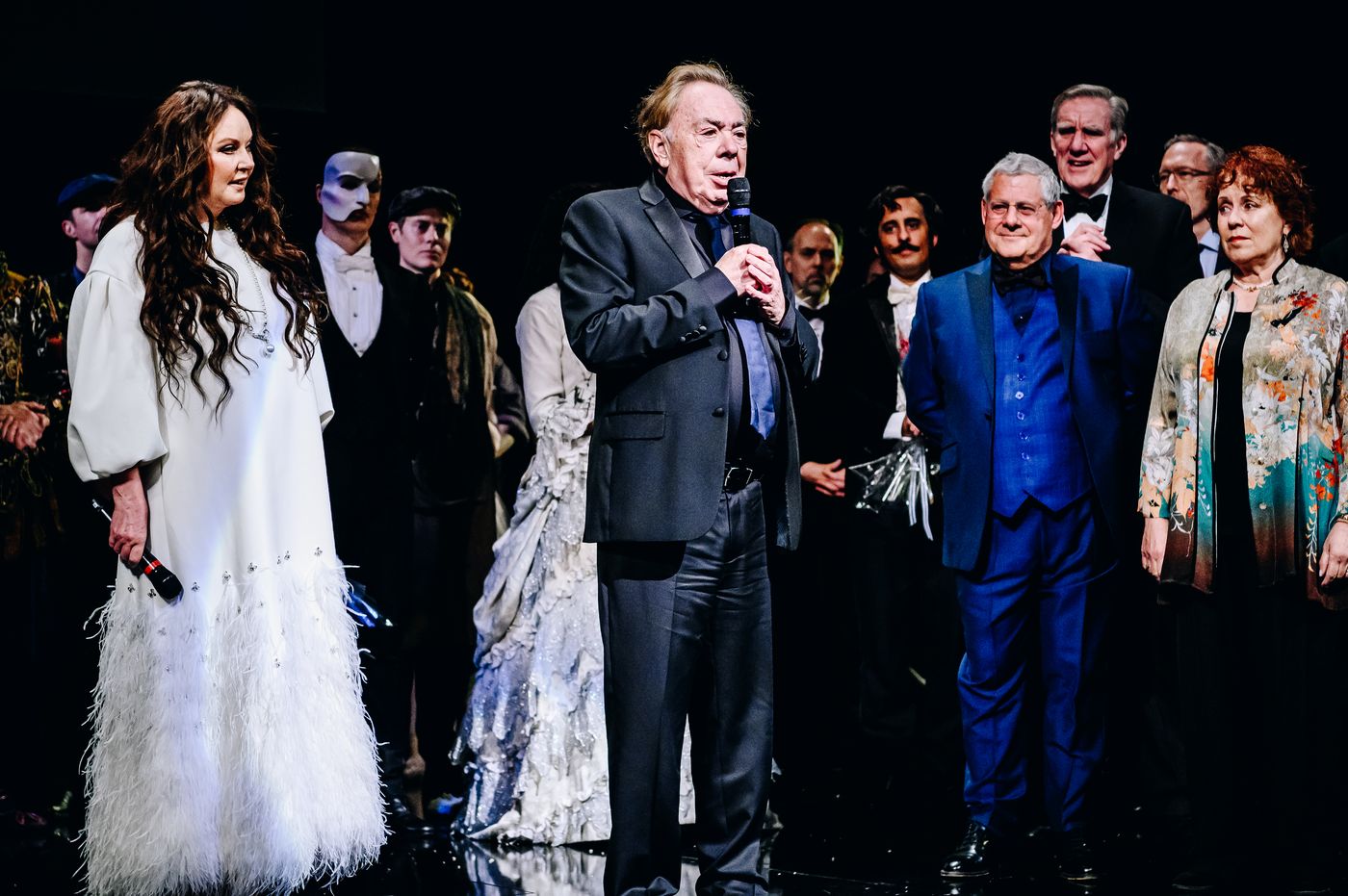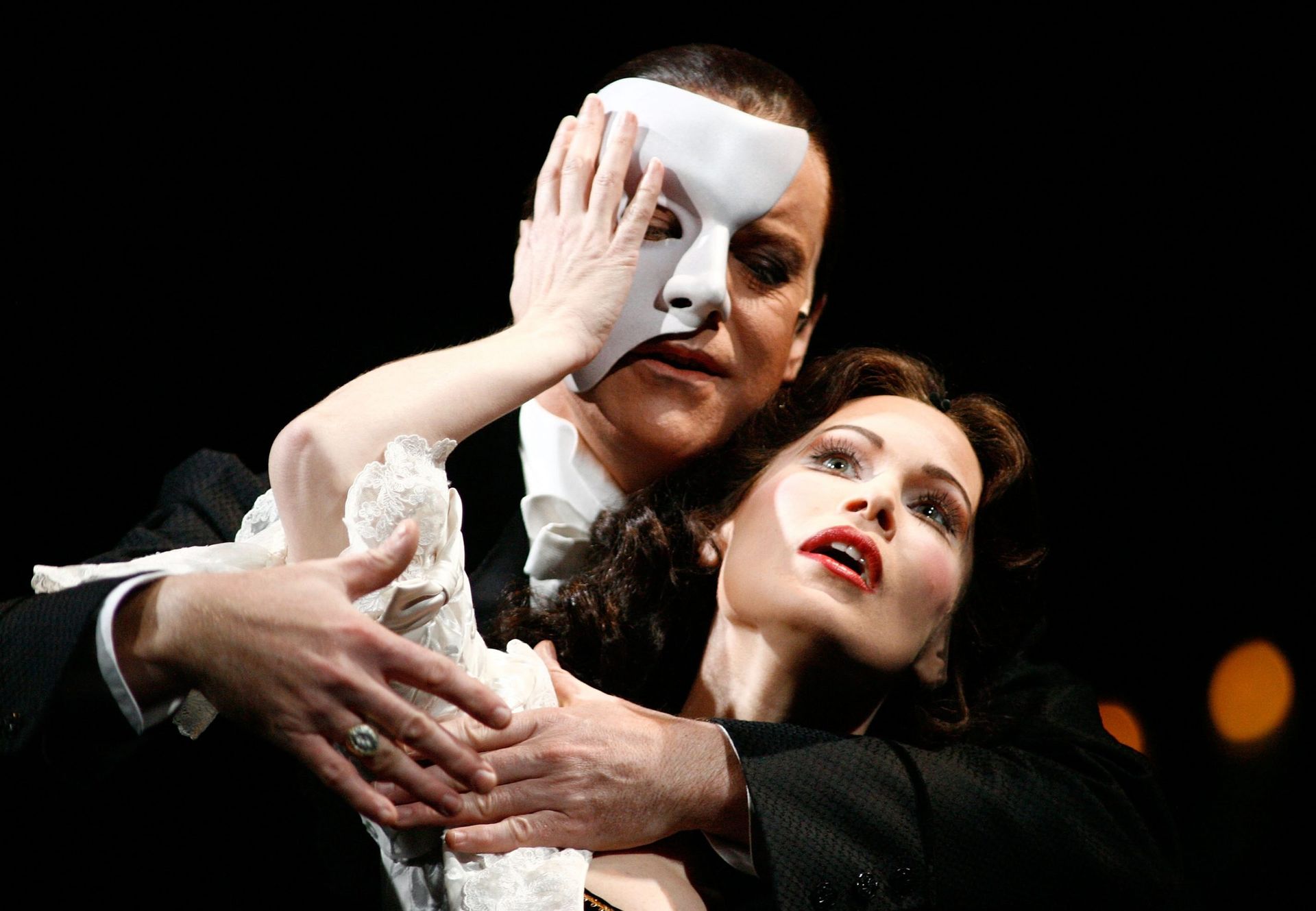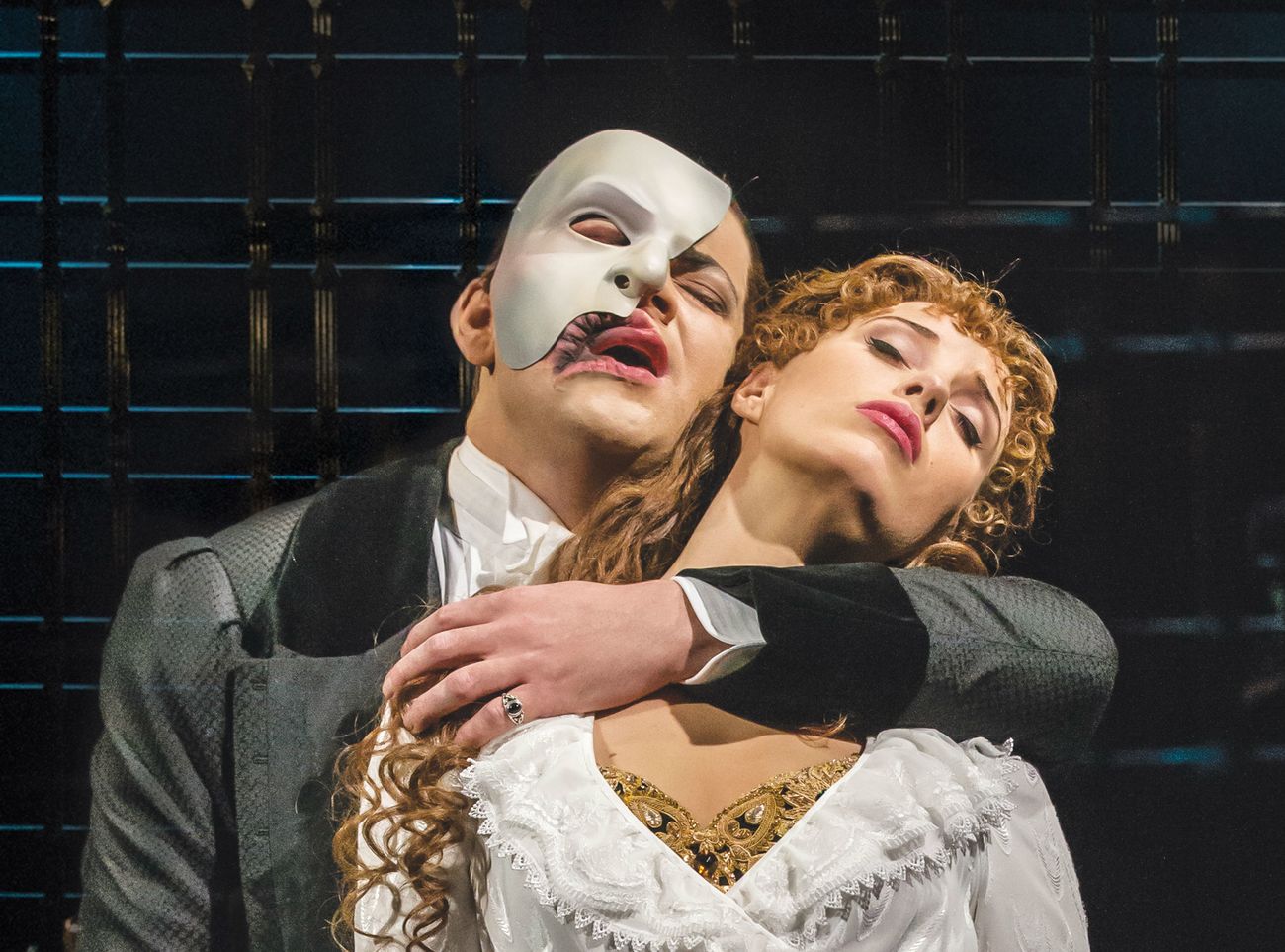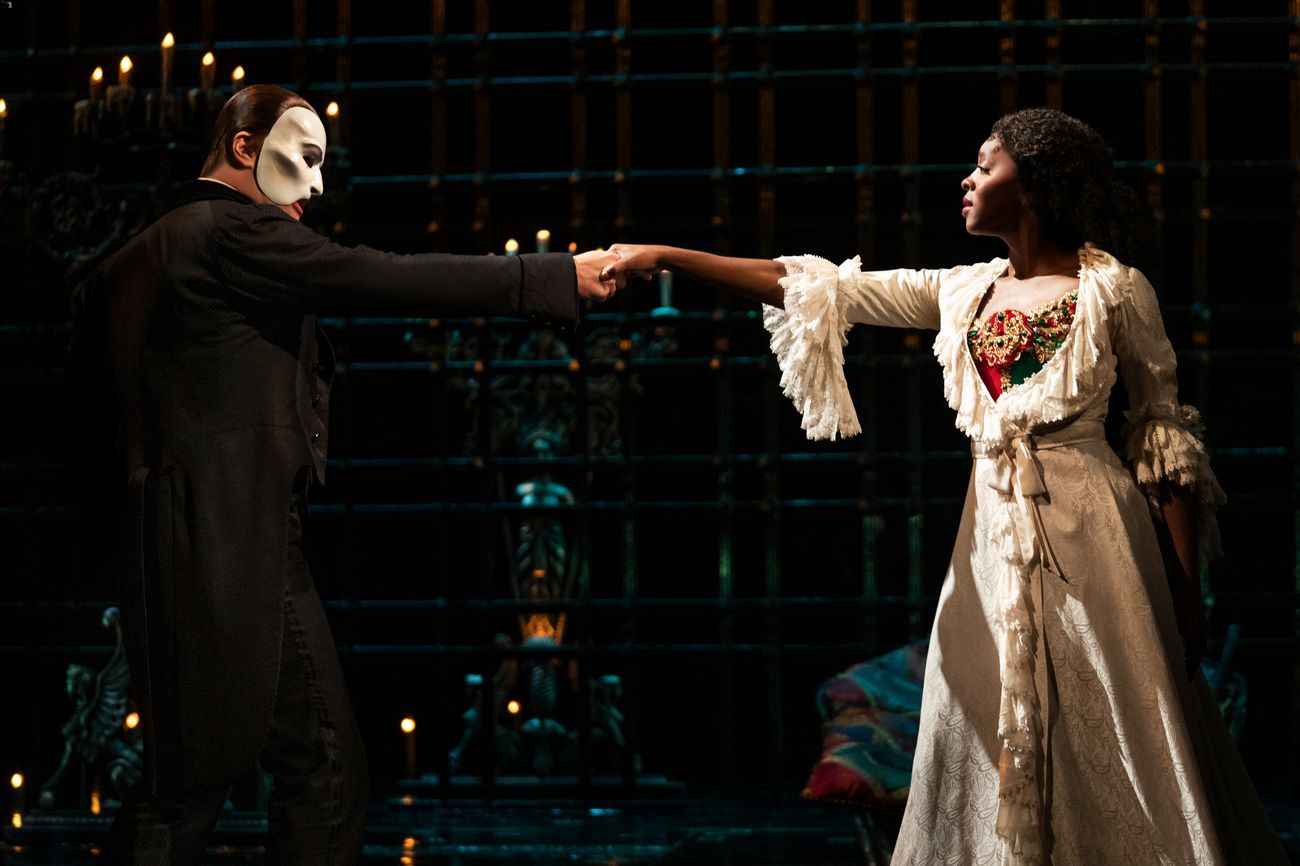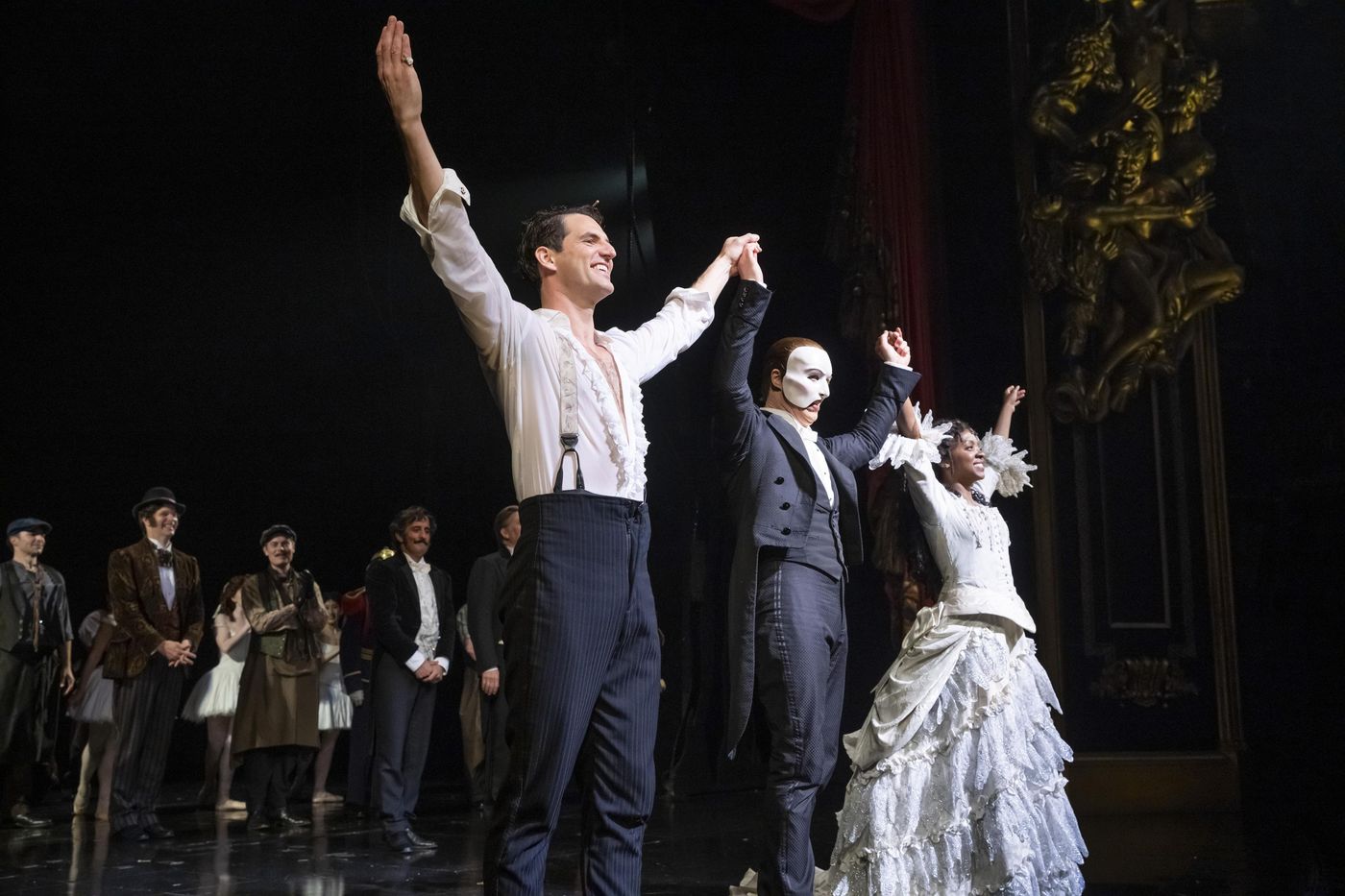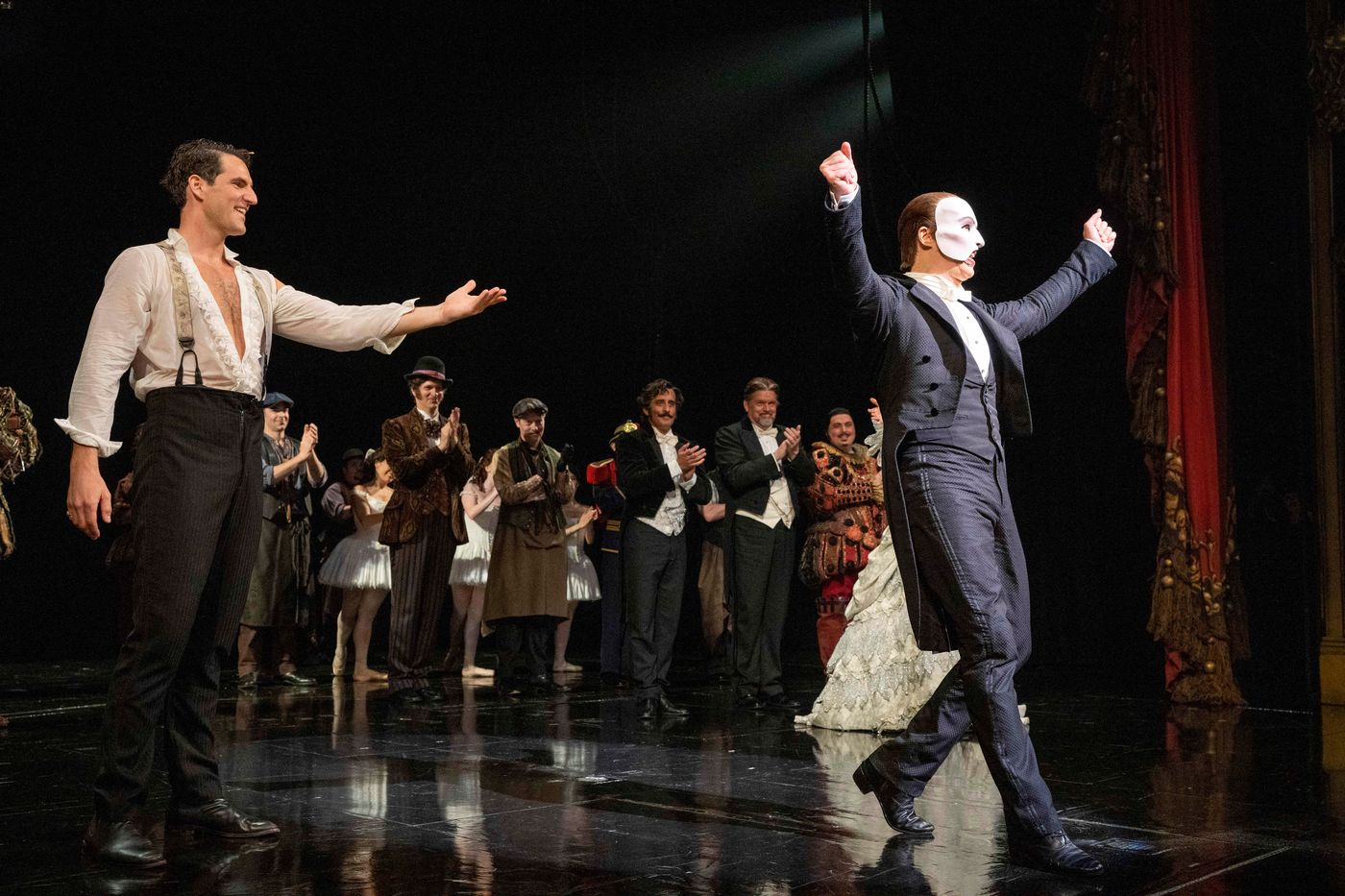Home>Events & Info>Opera>Where Did Phantom Of The Opera Take Place
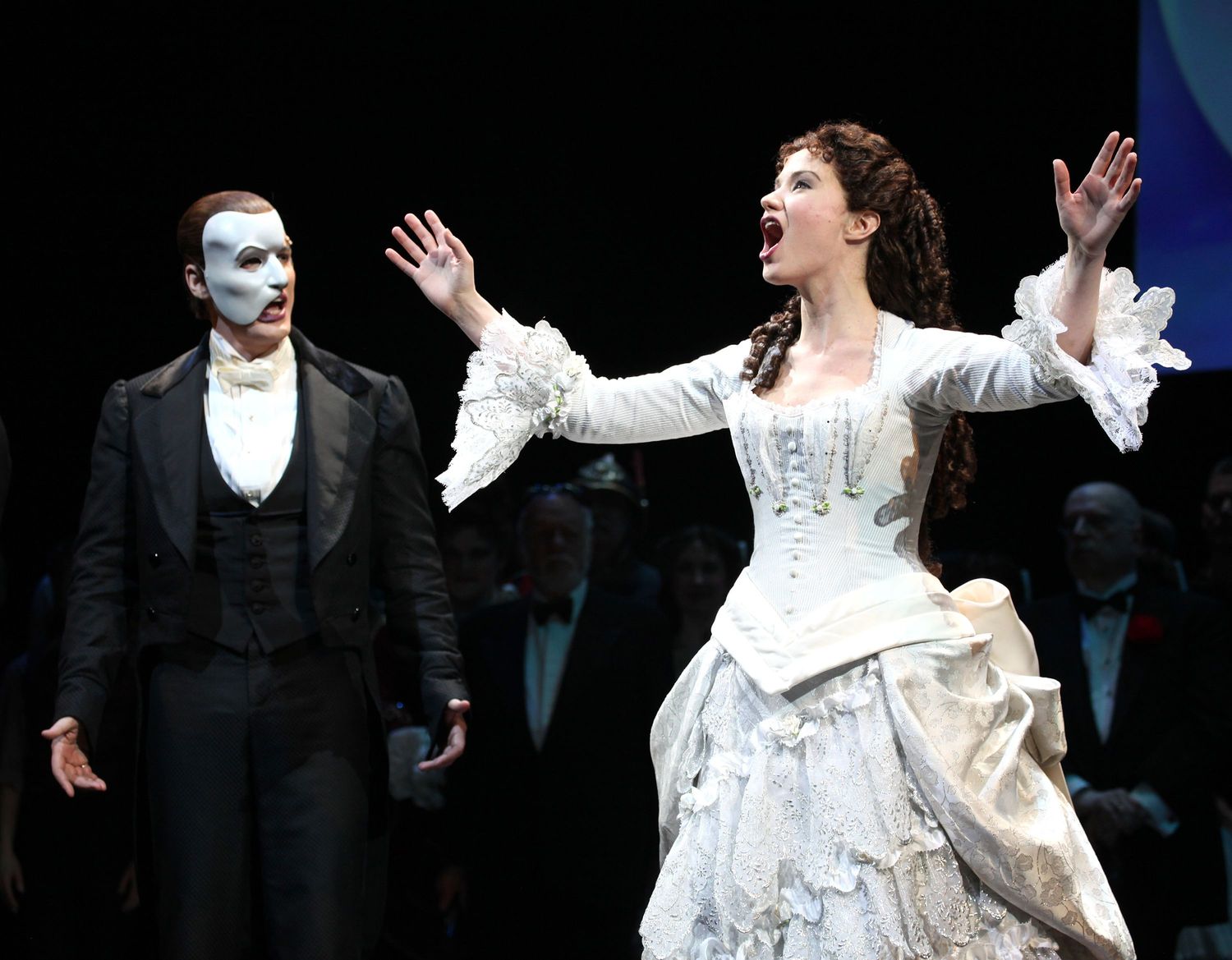

Opera
Where Did Phantom Of The Opera Take Place
Modified: January 22, 2024
Experience the magic of the opera as you discover where the iconic Phantom of the Opera took place. Immerse yourself in the world of music, mystery, and romance at this legendary opera house.
(Many of the links in this article redirect to a specific reviewed product. Your purchase of these products through affiliate links helps to generate commission for AudioLover.com, at no extra cost. Learn more)
Table of Contents
Introduction
Since its debut in 1986, Andrew Lloyd Webber’s musical masterpiece, “The Phantom of the Opera,” has captured the hearts and imaginations of audiences around the world. Based on Gaston Leroux’s classic novel, this haunting tale of love, mystery, and obsession has become one of the most beloved and enduring works of musical theater.
But have you ever wondered where the Phantom of the Opera takes place? In this article, we will delve into the setting of this captivating story and explore the real-world location that served as its backdrop.
Step into the world of 19th century Paris, as we uncover the secrets of the Palais Garnier, the iconic opera house where the Phantom’s story unfolds. Journey beneath its grand facade to discover the hidden underground city that became the Phantom’s lair. And learn how this tale of the unknown and the forbidden continues to captivate audiences and shape the world of opera even today.
So, fasten your seatbelts and prepare to be transported to a world of mystery and music as we unravel the enigma that is the Phantom of the Opera. Let’s begin our journey into the heart of this mesmerizing tale.
History of the Phantom of the Opera
The origin of the iconic character known as the Phantom of the Opera can be traced back to the early 20th century. The character was brought to life in Gaston Leroux’s 1910 novel, “Le Fantôme de l’Opéra,” which tells the tragic story of a disfigured musical genius who haunts the Paris Opera House.
Leroux’s novel was inspired by several real-life events and legends surrounding the Palais Garnier, the grand opera house in Paris. One such legend was the tale of a chandelier that fell from the ceiling during a performance, leading to rumors of a ghostly presence. Another inspiration for the story came from the mysterious catacombs and hidden passageways that existed beneath the opera house – a perfect setting for a tale of mystery and intrigue.
Since its publication, “The Phantom of the Opera” has captured the imaginations of readers worldwide and has been adapted into numerous stage and film adaptations. However, it was Andrew Lloyd Webber’s musical adaptation that truly catapulted the story into the mainstream consciousness.
Premiering on London’s West End in 1986, Webber’s musical became an instant sensation and went on to conquer Broadway, earning critical acclaim and a devoted fan base. Its unforgettable music, poignant storyline, and breathtaking stage design have made it the longest-running musical in Broadway history, captivating audiences for over three decades.
Over the years, “The Phantom of the Opera” has continued to evolve and adapt, with countless productions taking place in theaters all over the world. Each new interpretation brings its own unique vision to the story while staying true to the enduring themes of love, passion, and the human desire for acceptance.
Today, the Phantom’s legacy lives on, with fans eagerly attending performances, listening to the iconic soundtrack, and immersing themselves in the enchanting world of the Opera Ghost. Whether experienced on stage, screen, or in the pages of Leroux’s novel, the story of the Phantom continues to captivate new generations and remains an integral part of the world’s cultural tapestry.
Setting of the Novel
The setting of Gaston Leroux’s novel, “The Phantom of the Opera,” is predominantly the grand and opulent Palais Garnier in Paris, France. This magnificent opera house, also known as the Paris Opera, serves as the atmospheric backdrop for the unfolding drama.
The Palais Garnier, designed by Charles Garnier and completed in 1875, is a masterpiece of architectural splendor. Its ornate façade, adorned with sculptures and intricate details, stands as a testament to the grandeur and extravagance of the era. Its grand staircase, grand foyer, and baroque-style auditorium with its dazzling chandelier all contribute to its awe-inspiring presence.
Within the walls of the Palais Garnier, Leroux weaves a tale of mystery and suspense. The readers are transported to the world of the opera house, where the cast, crew, and visitors are unaware of the hidden secrets lurking beneath.
Beneath the Palais Garnier lies a labyrinth of catacombs and hidden passageways, which form the enigmatic underground city where the Phantom makes his home. This subterranean domain, with its dark and eerie atmosphere, serves as the Phantom’s lair, populated with his vast collection of treasures and his haunting presence.
Leroux’s vivid descriptions of the Palais Garnier and its underground realm immerse the readers in a world of beauty and darkness, where the boundaries between reality and myth become blurred. The contrast between the majestic and glamorous opera house and the sinister underground city creates a sense of intrigue and suspense that underscores the story’s themes of love, obsession, and transformation.
Through his masterful use of setting, Leroux transports us to a time and place where passion and music intertwine, and where the boundaries between the seen and the unseen are blurred. The Palais Garnier becomes more than just a backdrop; it becomes a vibrant and integral character in the story, adding depth and richness to the narrative.
Today, visitors to Paris can still experience the elegance and grandeur of the Palais Garnier, as it continues to serve as the home of the Paris Opera. Standing in its grand halls and gazing up at the ornate ceiling, one can’t help but feel a connection to the fictional world of the Phantom of the Opera, where passion, mystery, and the power of music converge.
The Palais Garnier: An Iconic Venue
As the setting for Gaston Leroux’s “The Phantom of the Opera,” the Palais Garnier takes center stage as a character in its own right. This iconic venue, also known as the Paris Opera House, is a testament to the grandeur and elegance of 19th-century architecture.
Designed by Charles Garnier and completed in 1875, the Palais Garnier is a marvel of opulence and artistic mastery. Its exterior exudes grandeur, with intricate details, sculptures, and a dominant central dome that captures the eye and commands attention.
Stepping inside the Palais Garnier is like stepping back in time. The grand foyer greets visitors with its breathtaking beauty, adorned with mirrors, sculptures, and ornate ceiling paintings. The richness of the red and gold decor evokes a sense of luxury and sophistication, setting the tone for the performances that take place within its walls.
The crowning jewel of the Palais Garnier is its legendary auditorium. The opulent space features plush velvet seats, exquisite chandeliers, and a ceiling painting by Marc Chagall that depicts scenes from famous operas. The stage, with its elaborate sets and intricate machinery, has witnessed countless performances, enchanting audiences with its grandeur and theatrical magic.
Throughout its history, the Palais Garnier has been a beacon of artistic expression, showcasing the talents of renowned composers, singers, and dancers from around the world. It has been the stage for countless operas, ballets, and concerts, drawing audiences who seek to be captivated by the power of music and the performing arts.
For fans of “The Phantom of the Opera,” the Palais Garnier holds a special allure. As they step into the opera house, they can’t help but imagine the haunted corridors, hidden passageways, and secret chambers that Leroux brought to life in his novel. The setting serves as a reminder that the borders between reality and fantasy can blur within the walls of this magnificent venue.
Today, the Palais Garnier continues to be a thriving cultural hub and remains one of the most prestigious opera houses in the world. It hosts a diverse program of performances that cater to a wide range of artistic tastes, ensuring that the legacy of this iconic venue lives on.
Visitors to the Palais Garnier can join guided tours to explore its stunning architecture and learn about its rich history. Whether attending a performance or simply marveling at its beauty, experiencing the grandeur of the Palais Garnier is an unforgettable experience that transports one to a world of artistry, passion, and timeless beauty.
Paris in the 19th Century
When diving into the world of “The Phantom of the Opera,” it is crucial to understand the historical context in which the story is set. The 19th century Paris depicted in Gaston Leroux’s novel serves as a backdrop of elegance, artistic fervor, and societal changes.
During this period, often referred to as the Belle Époque, Paris experienced a cultural and artistic renaissance. The city became a hub of creativity, attracting writers, artists, musicians, and intellectuals from all corners of the globe. It was a time of innovation and artistic exploration, with a vibrant atmosphere that permeated every aspect of Parisian life.
The arts flourished in the city, with an explosion of opera houses, theaters, and art galleries. Paris became a cultural melting pot, attracting renowned composers, such as Georges Bizet, Camille Saint-Saëns, and Jules Massenet, who contributed to the musical landscape that inspired Leroux’s novel.
Parisian society also underwent significant changes during the 19th century. The city saw the rise of the bourgeoisie and the emergence of a middle-class society. This societal shift brought about a desire for social mobility and the pursuit of luxury and refinement.
The Palais Garnier, as depicted in “The Phantom of the Opera,” was a symbol of this growing bourgeois elite. The grand opera house became a stage for the affluent to see and be seen, showcasing their status and sophistication in the social hierarchy.
However, amidst the glittering façade of the upper class, Paris also had its darker underbelly. Poverty, inequality, and social unrest were prevalent realities for many residents. The stark contrast between the opulence of the Palais Garnier and the poverty-stricken streets of the city served as a backdrop for the Phantom’s haunting presence.
Additionally, the industrial revolution sweeping through Europe during this time brought about significant changes in the social and economic landscape of Paris. The growing urbanization and the transformation of the cityscape played a part in crafting the atmosphere of mystery and intrigue that permeates Leroux’s novel.
Paris in the 19th century was a city in the midst of change and transformation. It was a place teeming with creativity, opulence, and contradictions. This vibrant backdrop became the perfect canvas for the tragic tale of the Phantom of the Opera, where the contrasting elements of beauty and darkness, love and obsession, found their place amidst the swirling currents of a rapidly evolving society.
The Phantom’s Lair: The Underground City
One of the most captivating aspects of “The Phantom of the Opera” is the Phantom’s hidden world beneath the Palais Garnier. Leroux’s novel brings to life an intricate underground city, which serves as the enigmatic lair of the Phantom.
Beneath the opulent grandeur of the opera house, a labyrinth of catacombs, tunnels, and secret passageways spanned beneath the streets of Paris. This underground maze became the Phantom’s sanctuary, a place where he could retreat from the judgmental eyes of society.
The underground city depicted in the novel is a haunting and mysterious place. Its dimly lit chambers are adorned with the Phantom’s prized possessions, such as rare musical instruments, antique artwork, and countless volumes of literature. This macabre yet fascinating domain reflects the Phantom’s passions and obsessions.
Within this underground realm, the Phantom crafts his own secluded world. The vastness of this hidden city allows him to move unnoticed and manipulate events above ground from the shadows. It becomes a space where he exercises control and exerts his influence over the theater and its inhabitants.
One of the notable features of the underground city is the Phantom’s lair. Nestled within the depths of the catacombs, this secret chamber serves as his private sanctuary. It is here that the Phantom indulges in his love for music, composing haunting melodies that captivate and enthrall.
The lair also houses the iconic pipe organ, where the Phantom’s musical genius truly comes to life. The powerful and resonant notes of the organ reverberate through the tunnels, evoking a sense of awe and fear in those who hear them.
Despite its eerie and mysterious ambiance, the underground city becomes a refuge for the Phantom, offering solace from the judgment and rejection he faces above ground. It is within these hidden depths that the Phantom’s complexities and contradictions unravel, revealing the depths of his torment and the intensity of his passions.
Leroux expertly creates a sense of intrigue and fascination with the Phantom’s underground lair. The clash between the splendor of the Palais Garnier and the dark, hidden recesses of the underground city adds an extra layer of mystique to the story, highlighting the Phantom’s dual nature as both a genius and a tormented soul.
Today, visitors to the Palais Garnier can explore the reality behind the fiction as guided tours offer glimpses into the underground passages and chambers that inspired Leroux’s imagination. One can stand in awe of the very spaces that brought the Phantom’s lair to life, and perhaps feel a shiver down their spine, as they ponder the enduring allure of this underground world.
The Impact and Legacy of the Phantom of the Opera
“The Phantom of the Opera” has left an indelible mark on the world of theater and popular culture, making a lasting impact that continues to resonate with audiences today. From its original novel to the mesmerizing musical adaptation, the Phantom’s story has captured the hearts and imaginations of millions worldwide.
Andrew Lloyd Webber’s musical adaptation, which premiered in 1986, propelled the Phantom’s tale to new heights of popularity. Its haunting melodies, theatrical grandeur, and unforgettable characters have made it one of the most successful and enduring musicals of all time.
The musical’s impact can be seen in its longevity and widespread acclaim. It has played to millions of theatergoers around the world and remains one of the longest-running shows both on Broadway and in the West End. Its iconic songs, including “The Music of the Night” and “Masquerade,” have become part of the cultural lexicon, recognized by audiences of all ages.
In addition to its stage success, “The Phantom of the Opera” has inspired numerous adaptations in film, television, and even theme park attractions. Each new interpretation brings a fresh perspective to the story, ensuring its relevance and popularity endure across generations.
But the impact of the Phantom’s story goes beyond the realms of entertainment. It has influenced the world of opera and theater, sparking a renewed interest in the art form and introducing a new generation to its beauty and power. The themes of love, passion, and longing explored in the story strike a chord with audiences, resonating on a deep and emotional level.
Furthermore, “The Phantom of the Opera” has created a dedicated and passionate fan base. Fans, known as “Phantom Phans,” connect with the story’s themes of outcasts, misunderstood individuals, and the power of love to transcend societal norms. They attend countless performances, collect memorabilia, and engage in online communities to share their love for the Phantom and his haunting tale.
The profound impact and enduring legacy of “The Phantom of the Opera” have made it a cultural phenomenon that shows no signs of fading away. Its themes of love, obsession, and the pursuit of individuality resonate with audiences across time and cultures, ensuring that the story continues to be celebrated and cherished for years to come.
As we reflect on the impact of “The Phantom of the Opera,” we recognize its ability to captivate, inspire, and transport audiences into a world of mystery and music. This enduring legacy serves as a testament to the power of storytelling and the ability of art to touch the deepest recesses of the human soul.
Conclusion
The Phantom of the Opera is not just a story; it is an immersive experience that takes readers, theatergoers, and fans on an unforgettable journey into a world of romance, mystery, and music. From the pages of Gaston Leroux’s novel to the grand stages of the Palais Garnier and beyond, the Phantom’s story continues to captivate hearts and leave an indelible mark on popular culture.
Throughout this article, we have explored the various elements that make the Phantom of the Opera so enchanting. From the historical setting of 19th century Paris to the iconic Palais Garnier that provides the backdrop for the story, the stage is set for a tale of passion and tragedy.
We have also delved into the Phantom’s hidden domain, the underground city beneath the opera house. This eerie and mysterious world adds an extra layer of intrigue to the narrative, highlighting the Phantom’s enigmatic presence and the duality of his character.
The story of the Phantom of the Opera has had a profound impact on the world of theater and popular culture. Its musical adaptation has become a global sensation, captivating audiences for decades with its unforgettable music, stunning stage design, and powerful performances. The legacy of the Phantom extends beyond the stage, inspiring countless adaptations and a dedicated fan base that continues to grow.
But the enduring appeal of the Phantom of the Opera goes beyond the surface-level fascination with a ghostly character and a tragic love story. It speaks to universal themes of love, acceptance, and the human longing for connection. It reminds us that beauty can be found in the most unlikely places and that our differences should be cherished rather than feared.
As we reach the end of our journey through the world of the Phantom of the Opera, we are left with a sense of wonder and admiration for the power of storytelling. The enduring popularity of this tale and the impact it has had on audiences around the world are a testament to the timeless allure of the arts.
So, whether you find yourself lost in the pages of Leroux’s novel, swept away by the melodies of the musical, or exploring the underground passages of the Palais Garnier, may you always remember the magic and beauty that the Phantom of the Opera brings. It is a tale that will continue to enchant and inspire, reminding us of the enduring power of love, passion, and the pursuit of our own unique voices.

